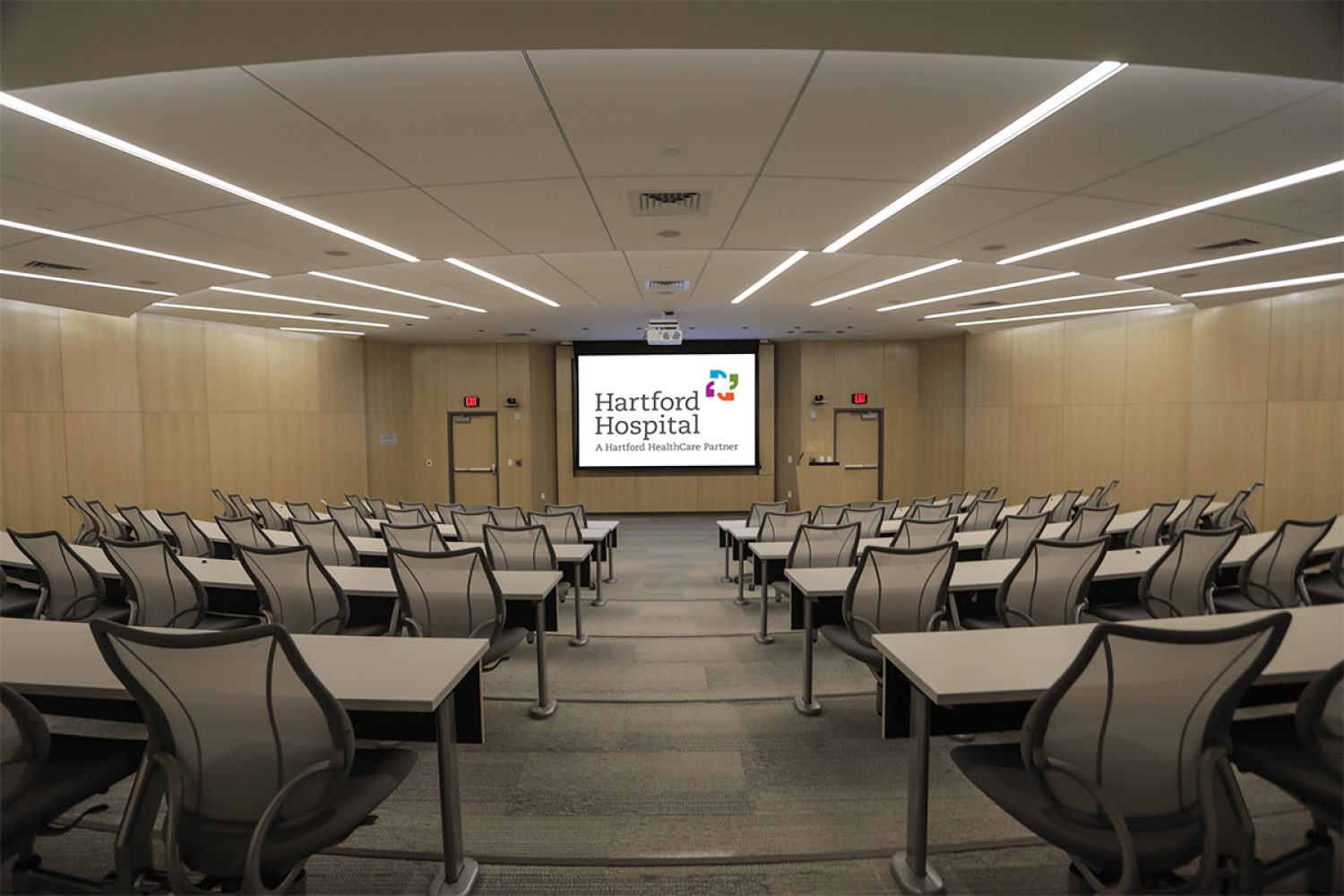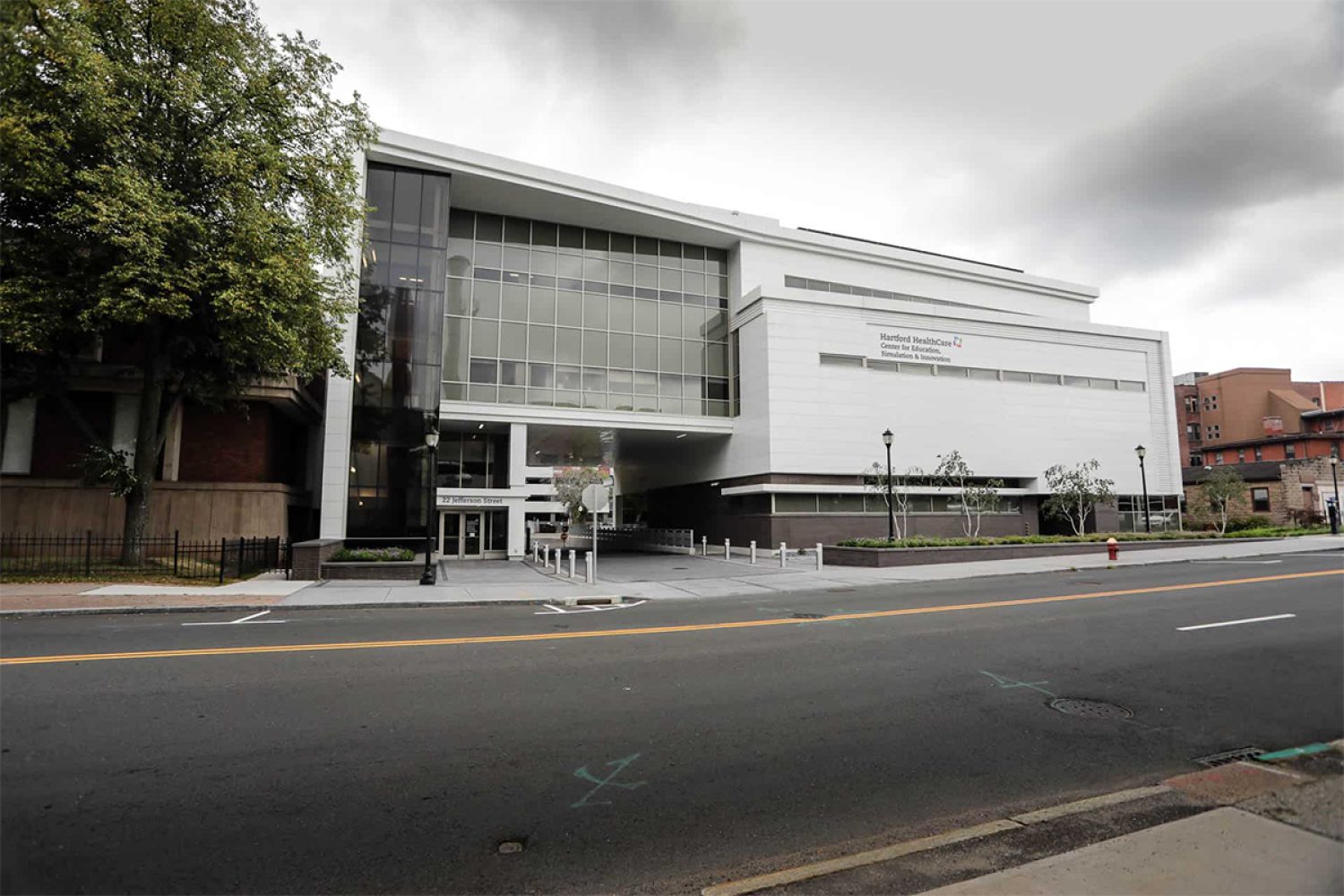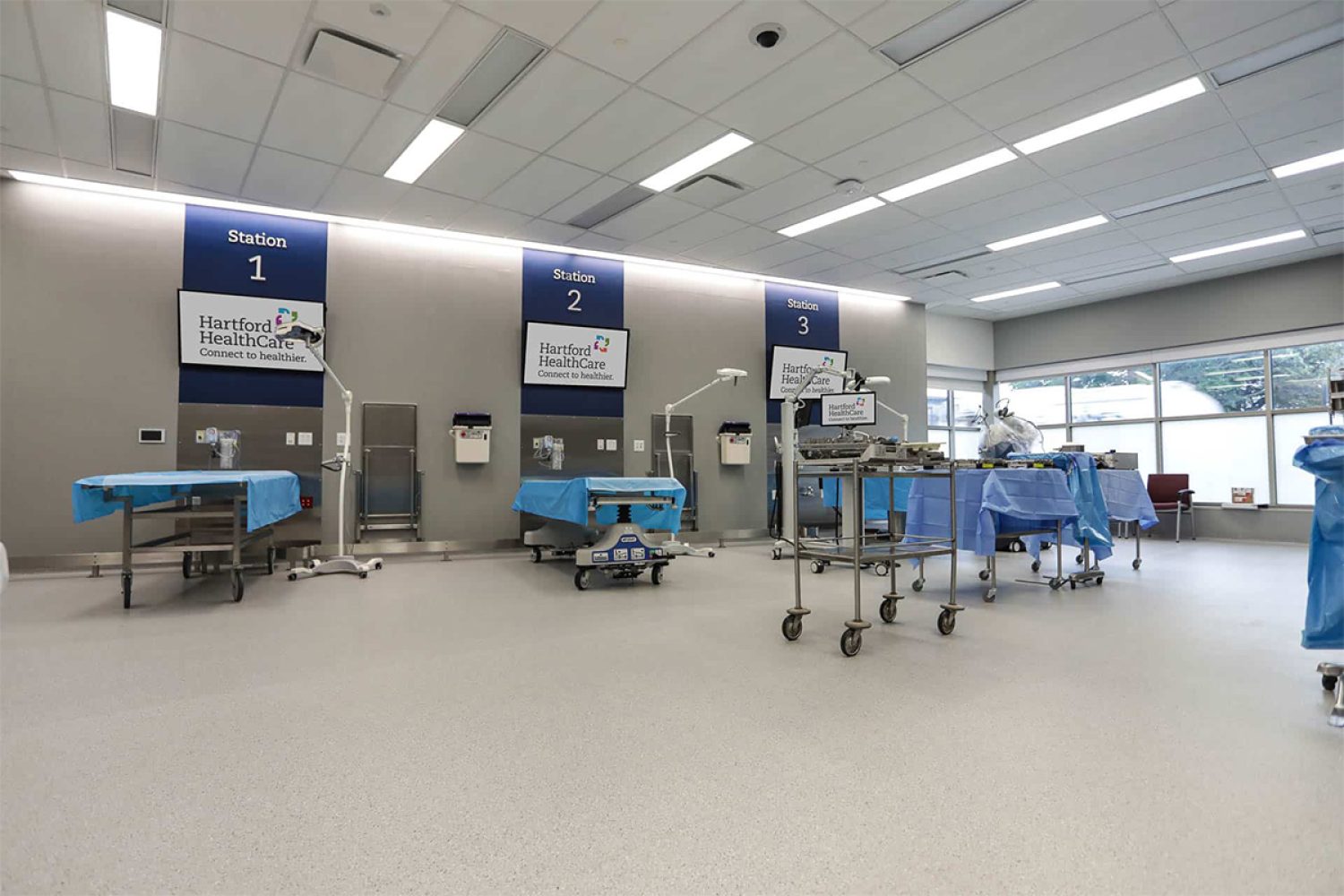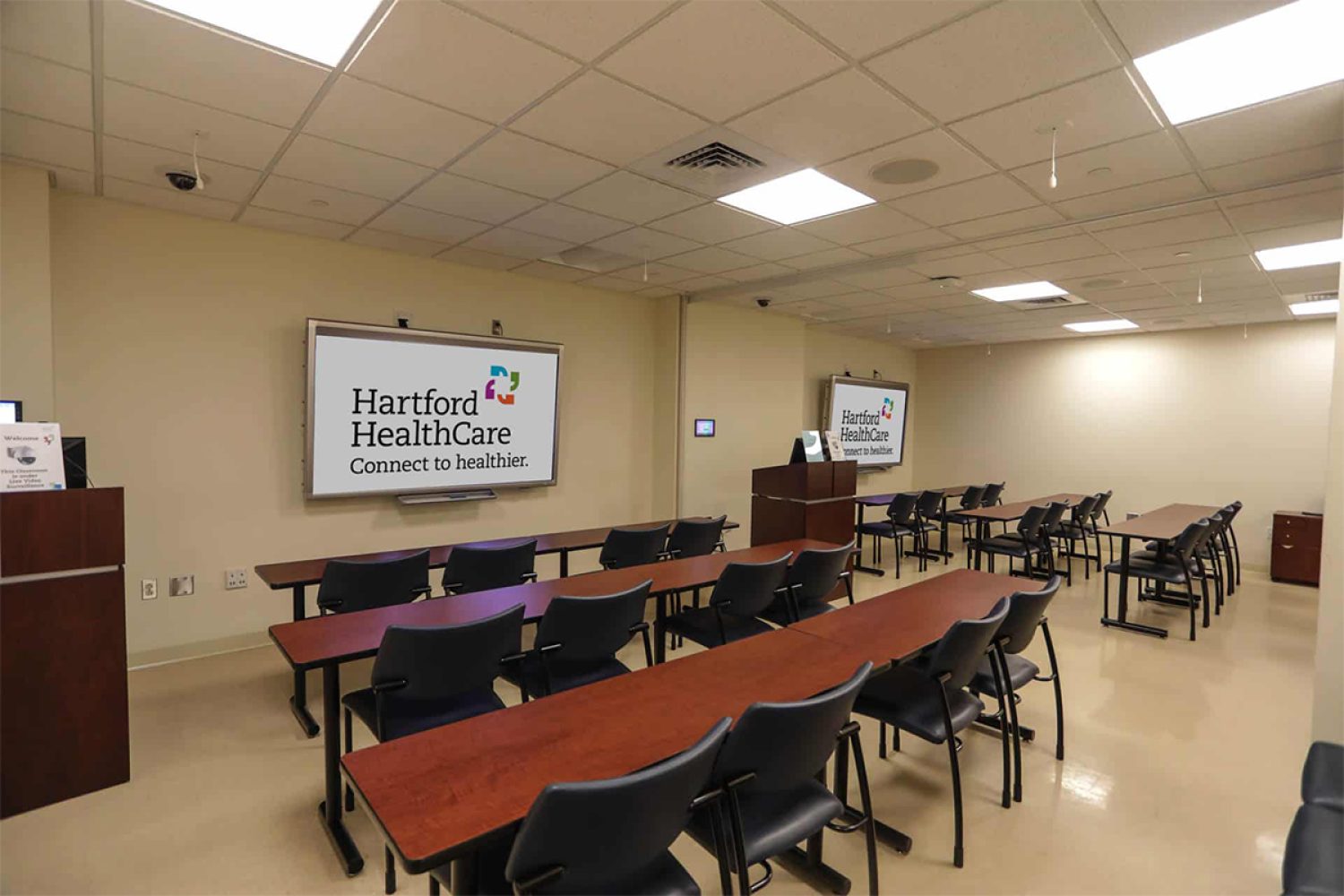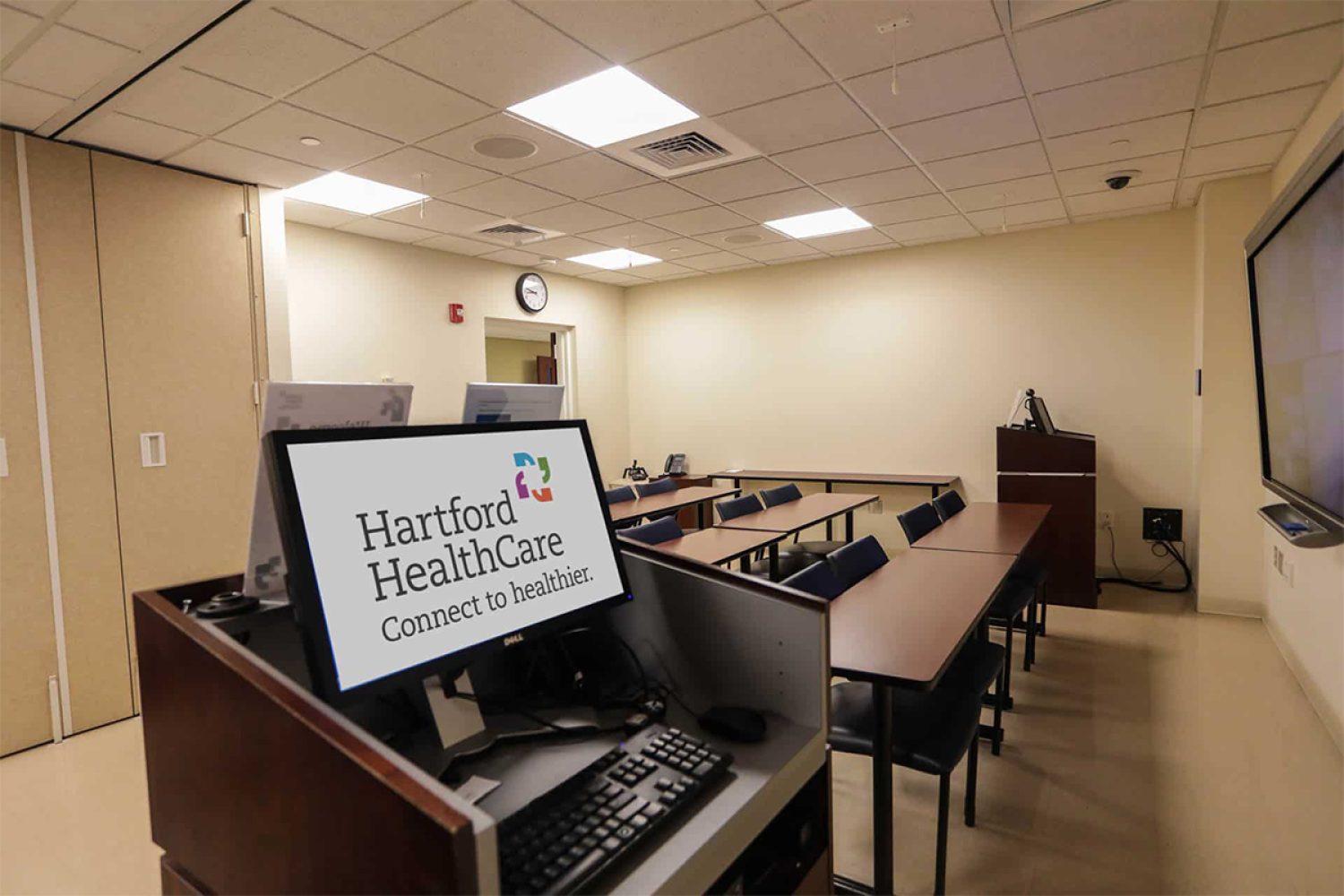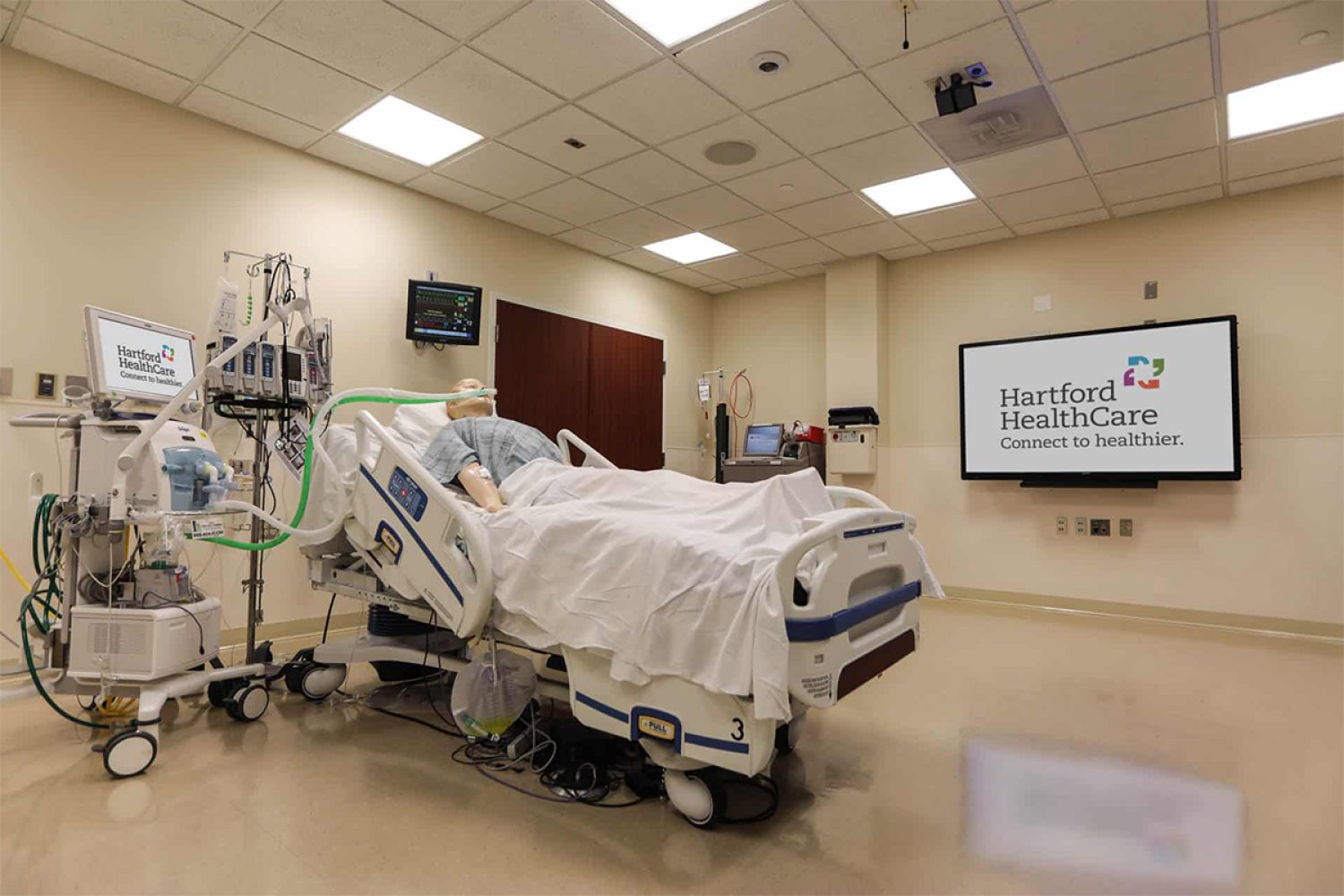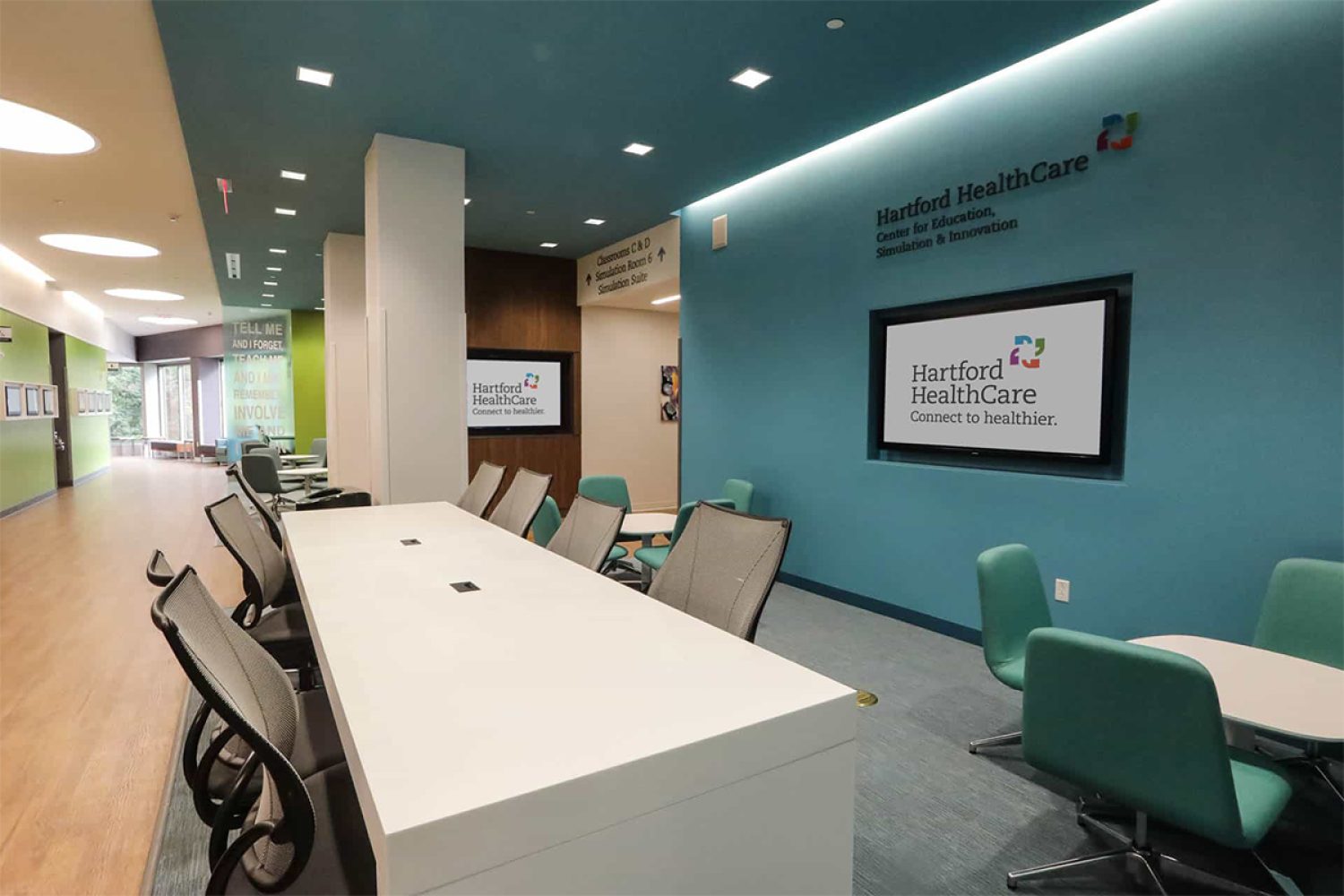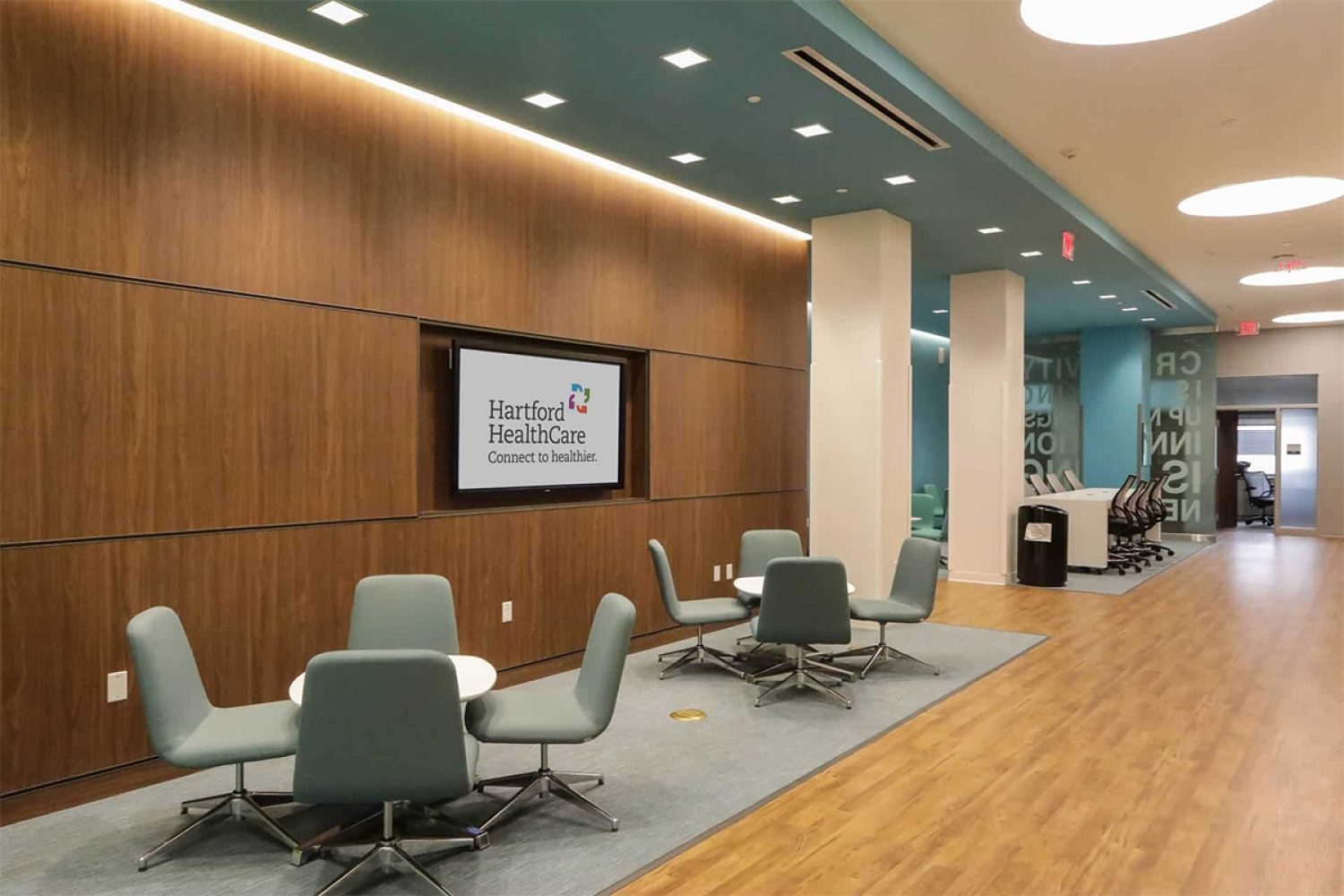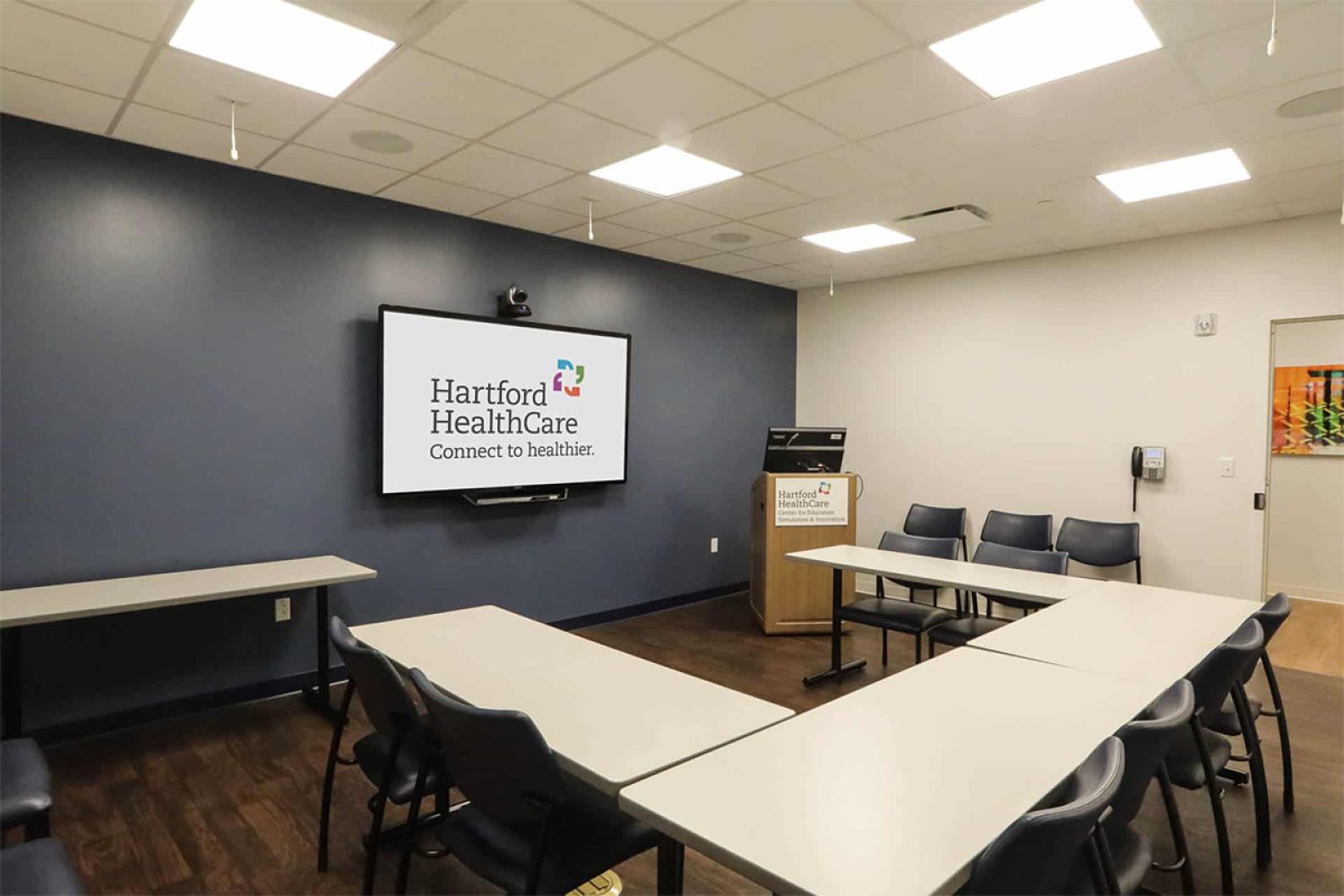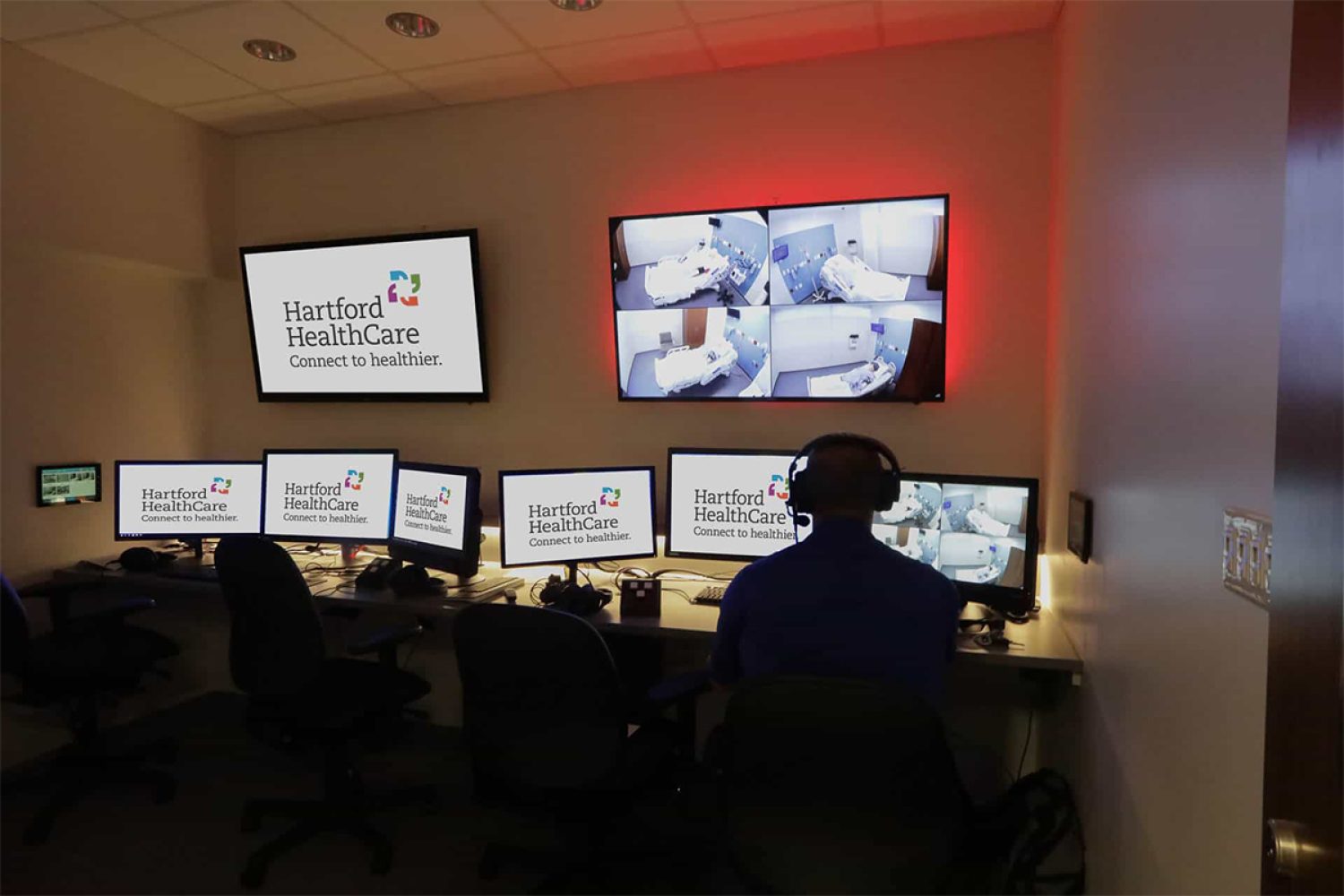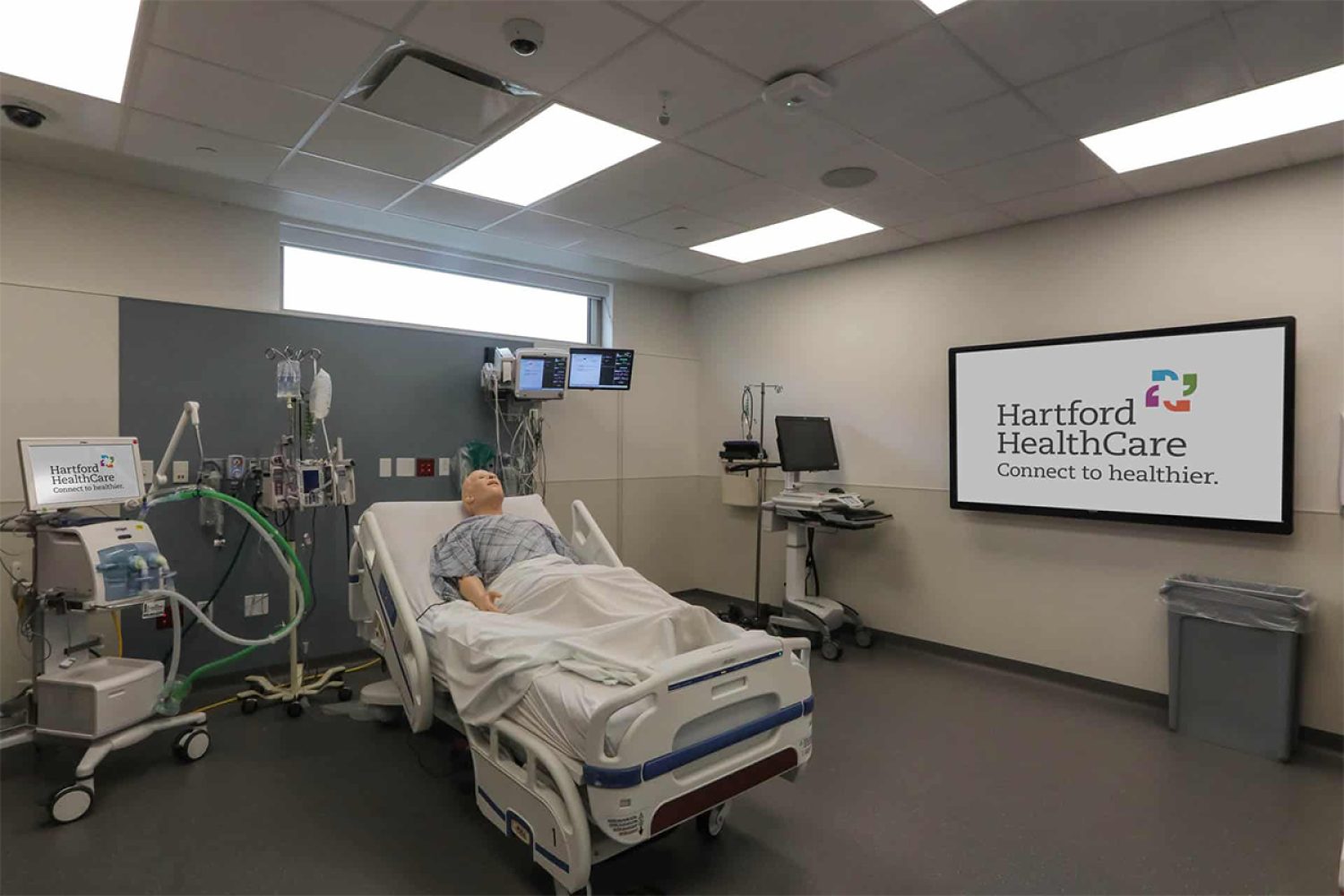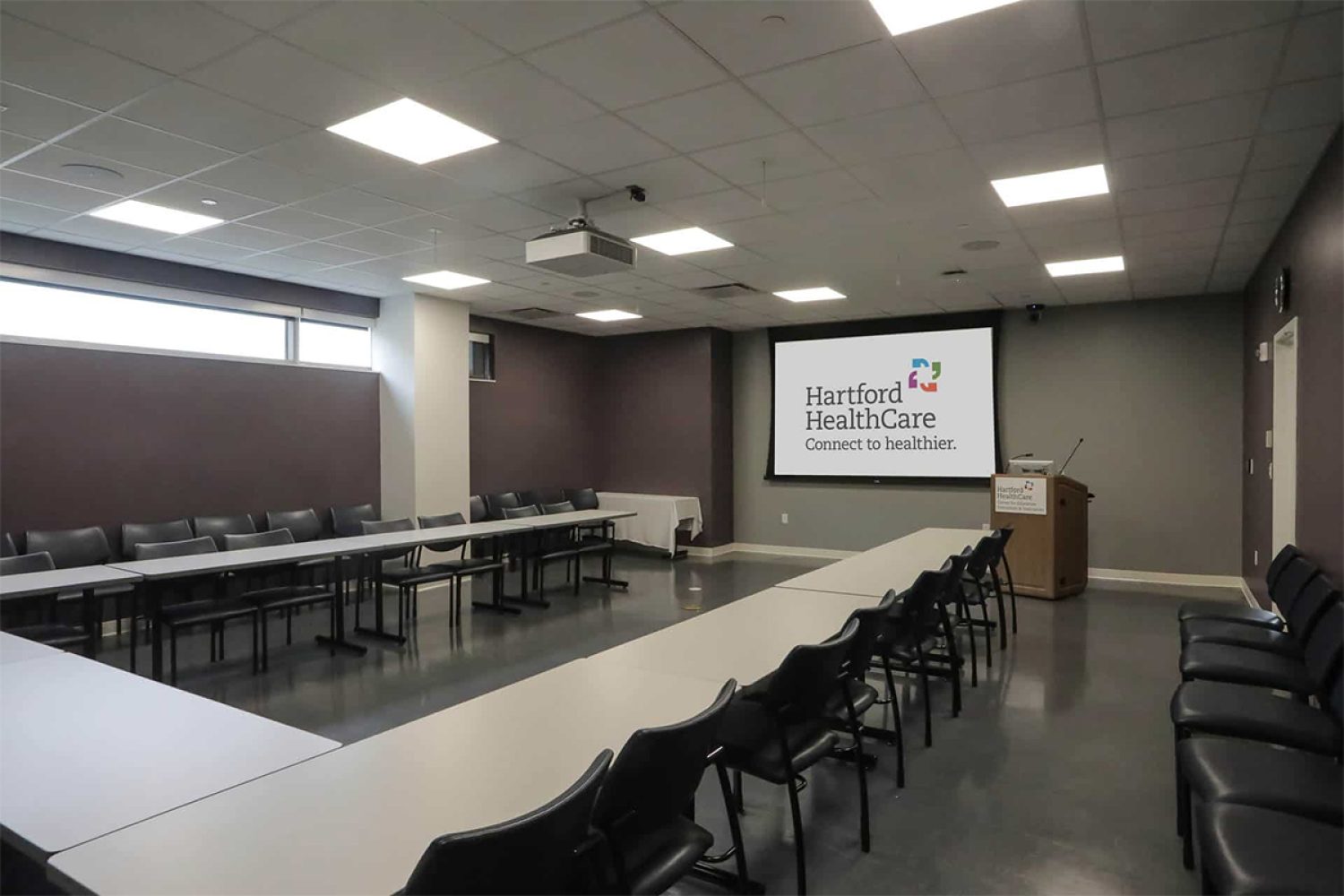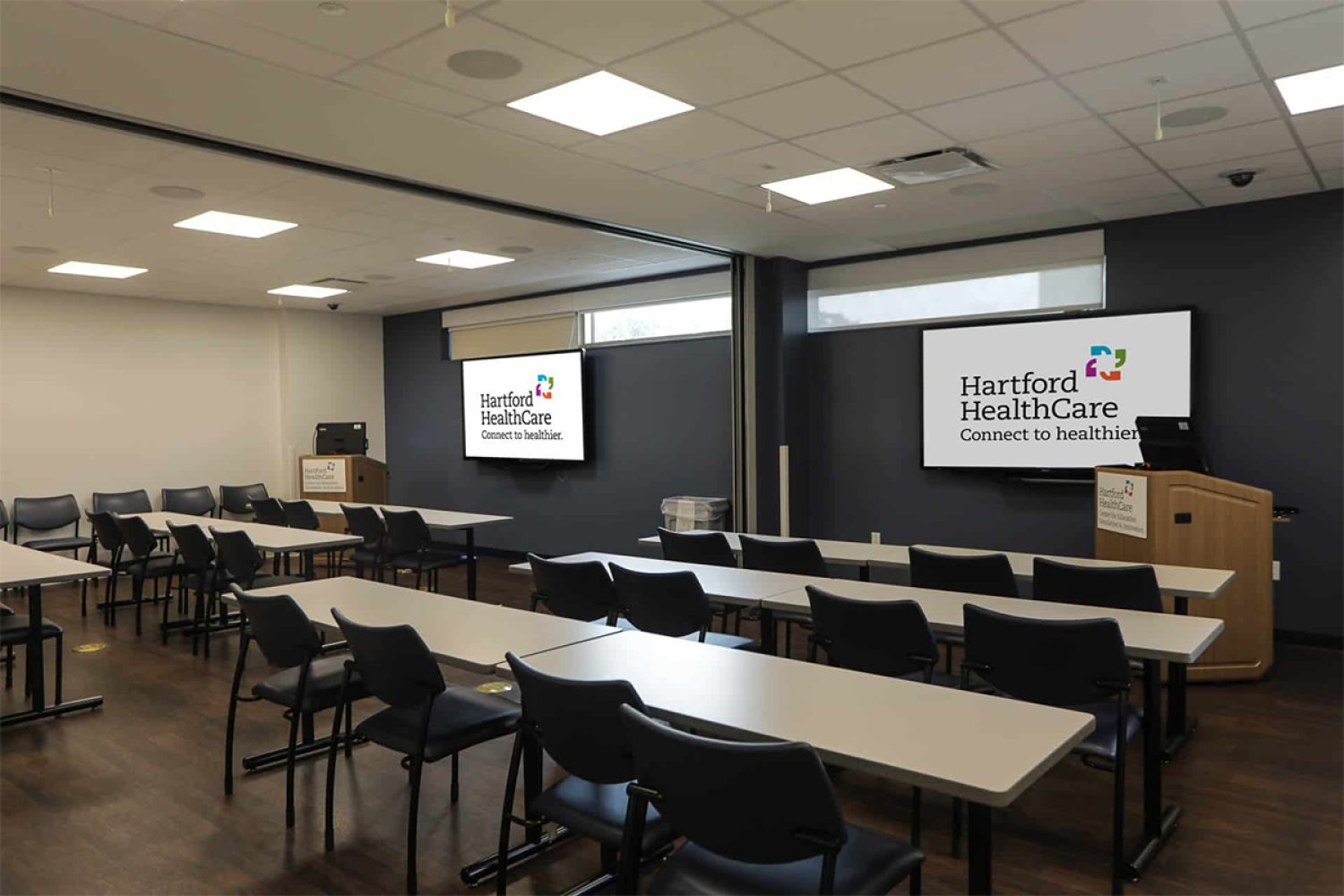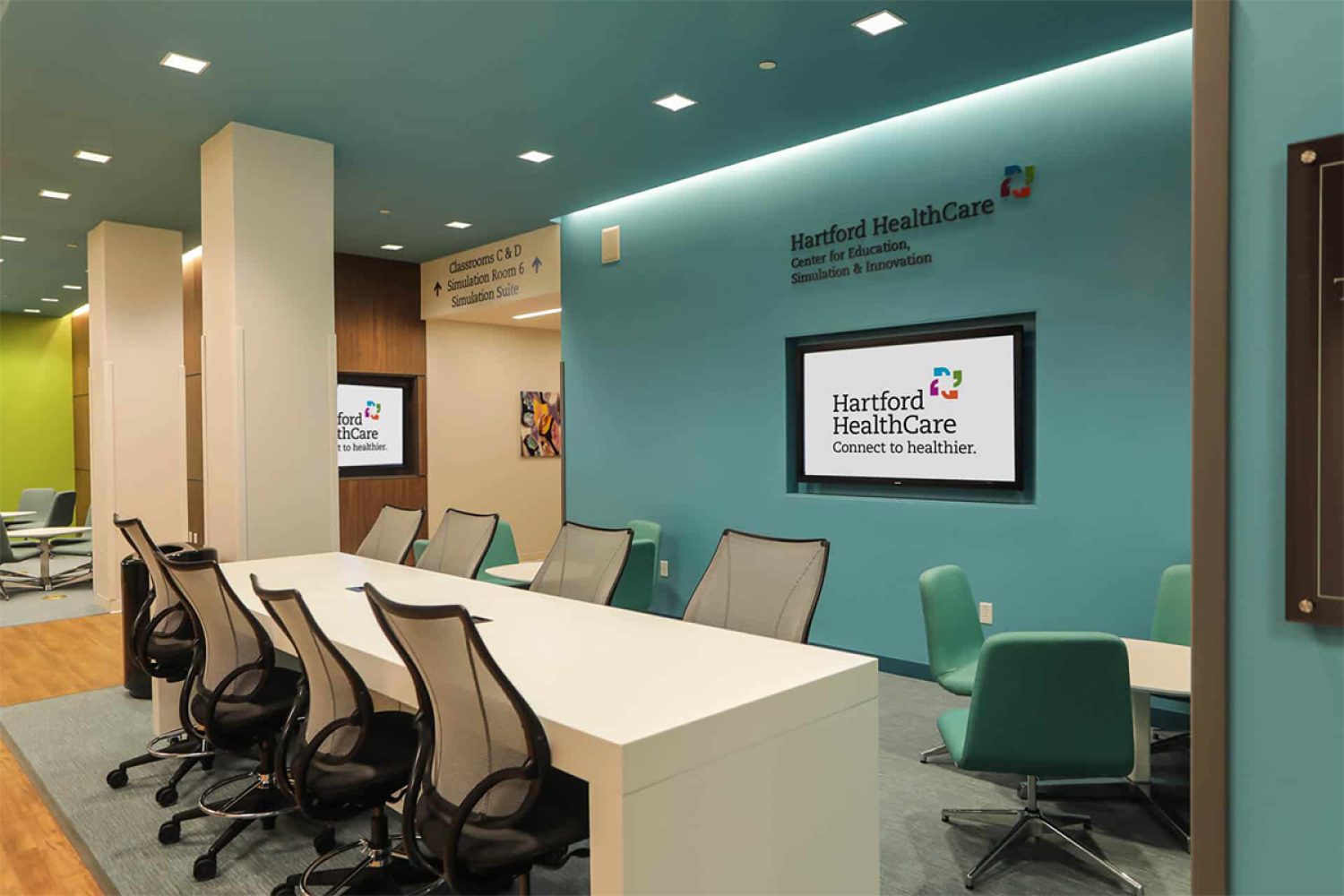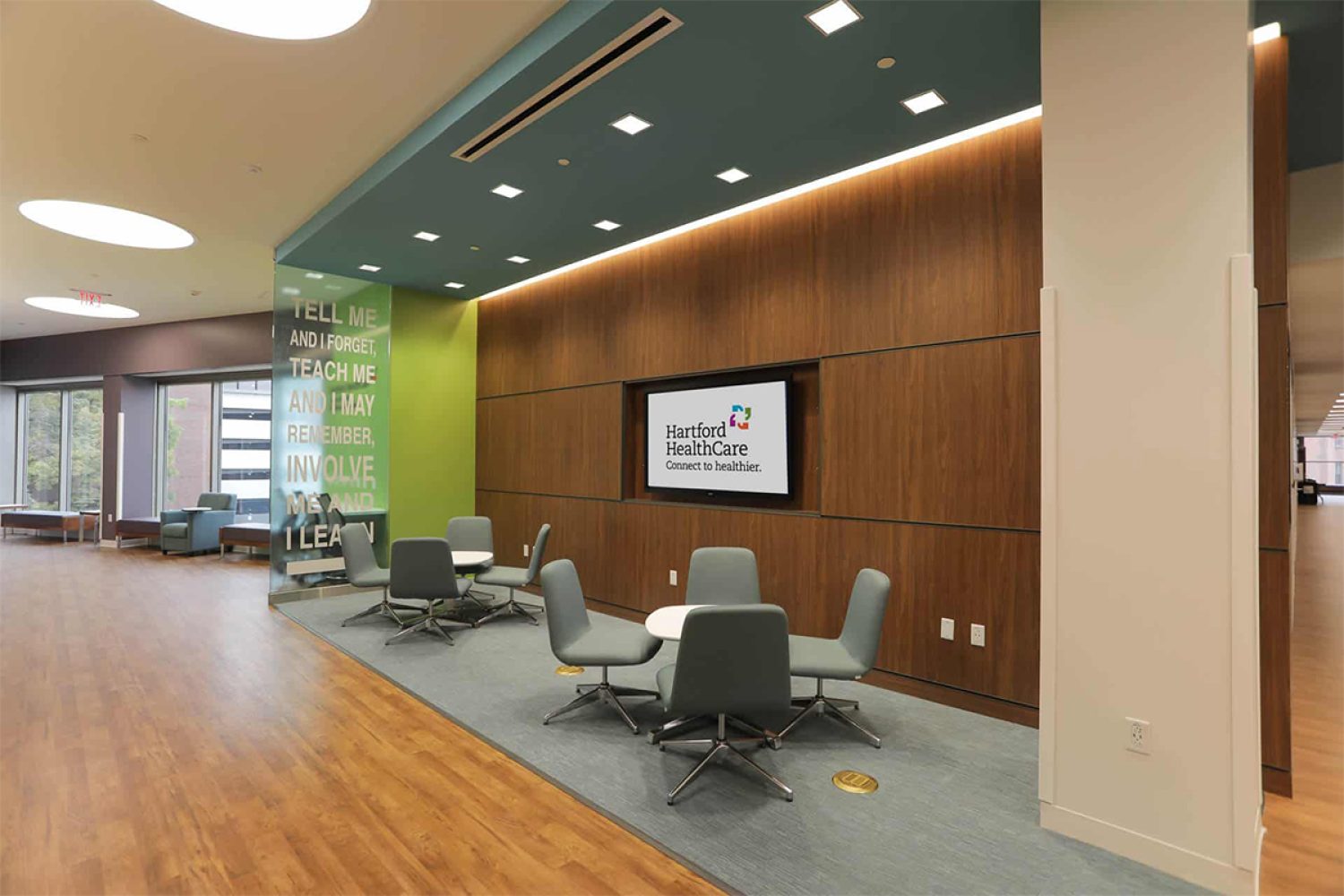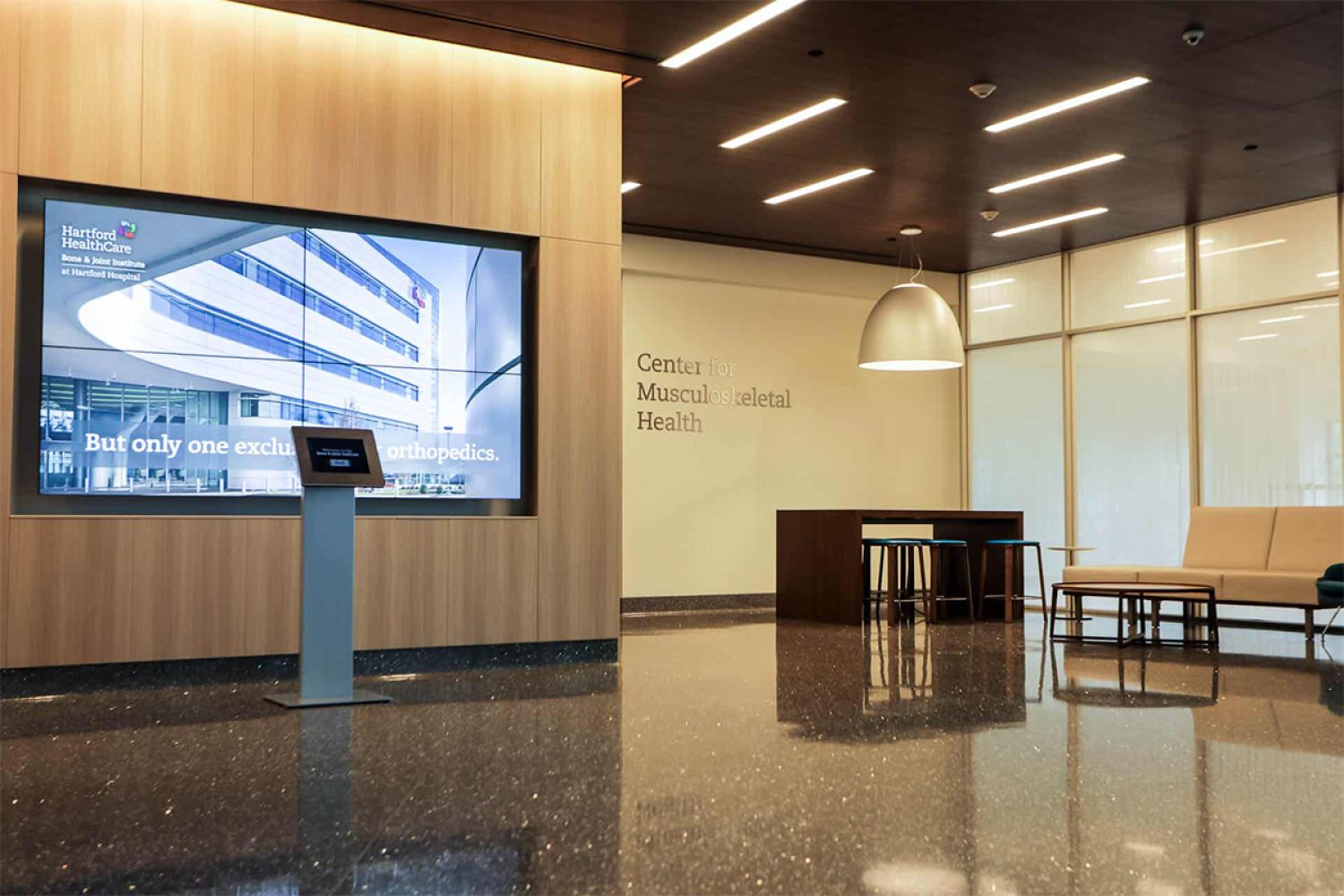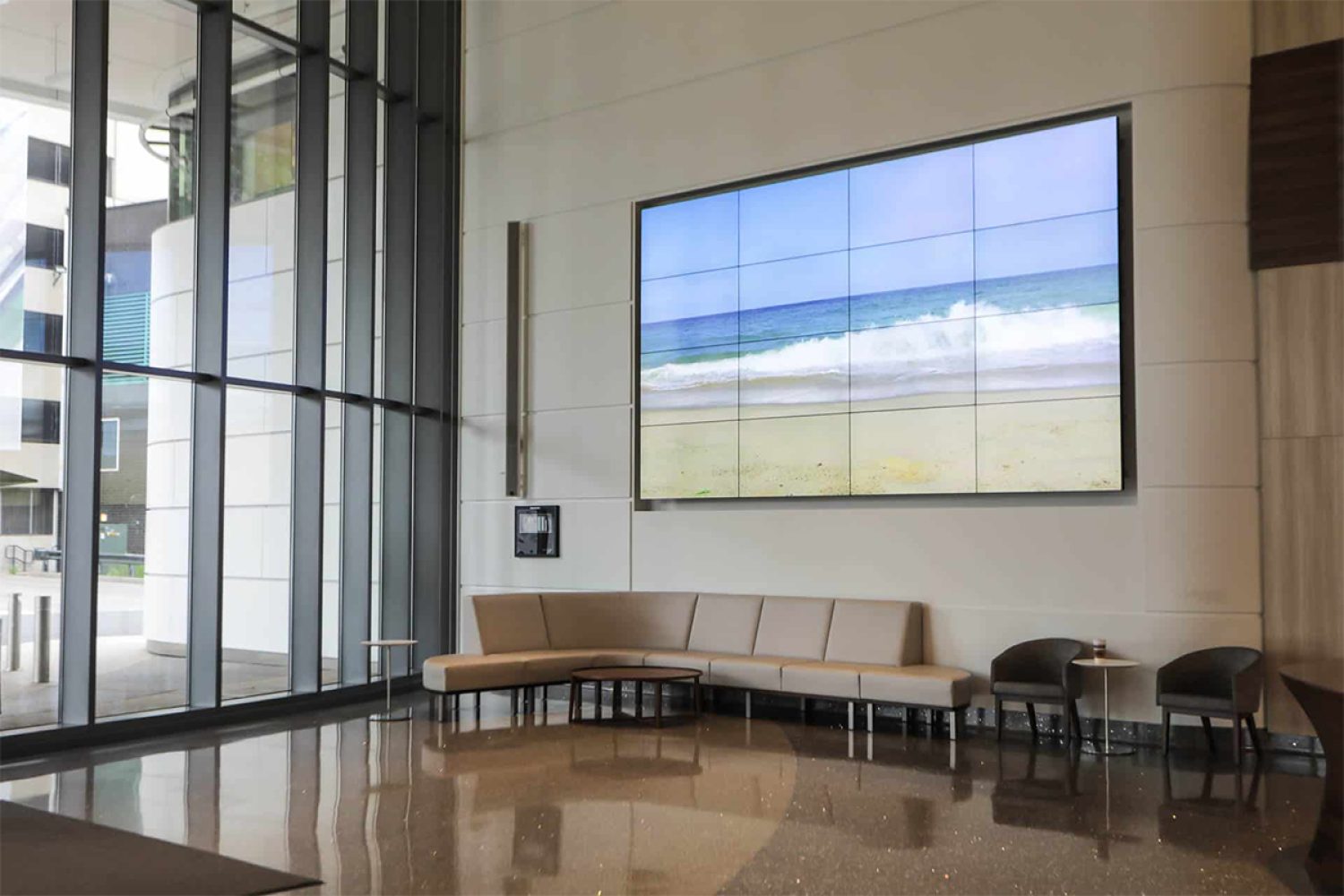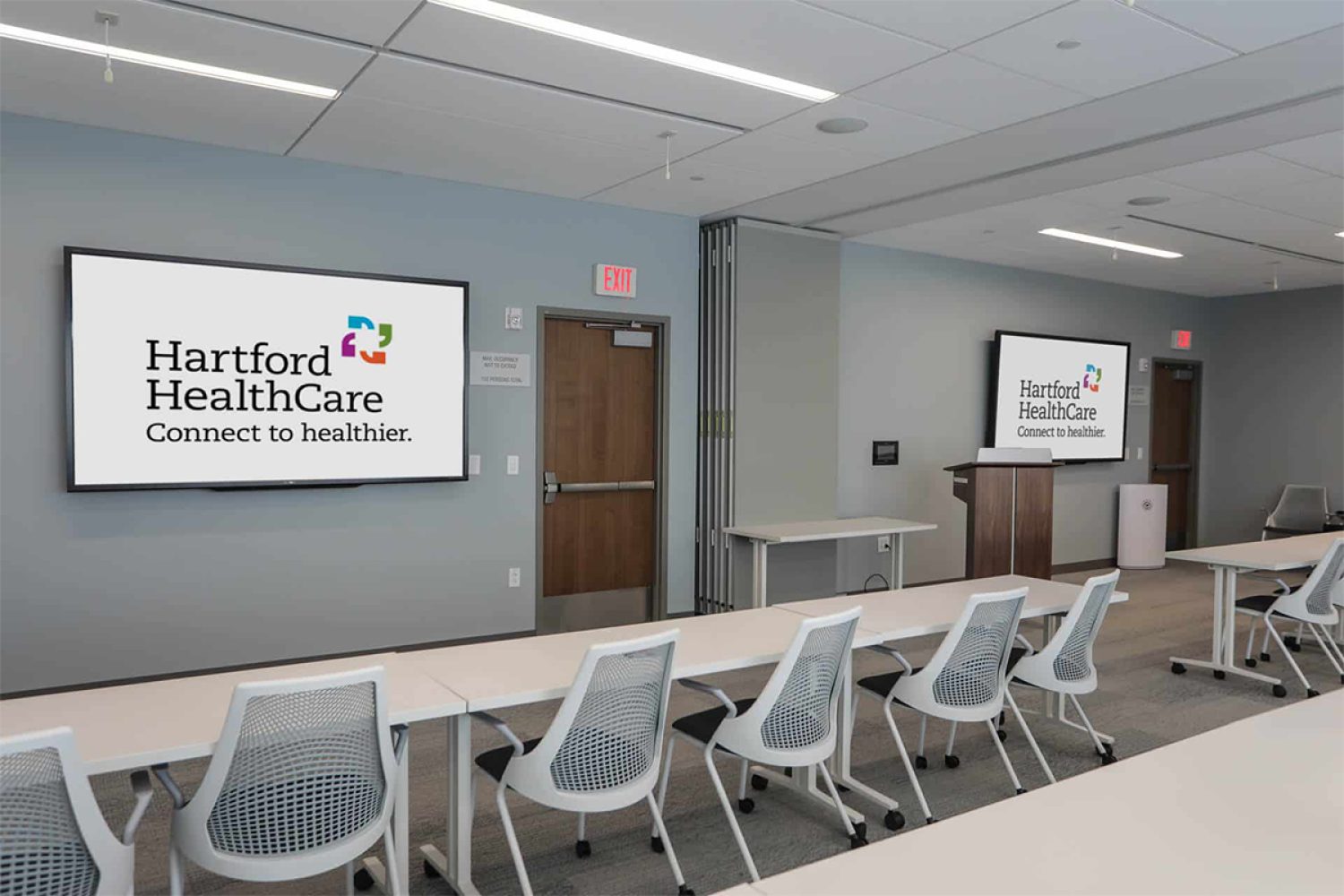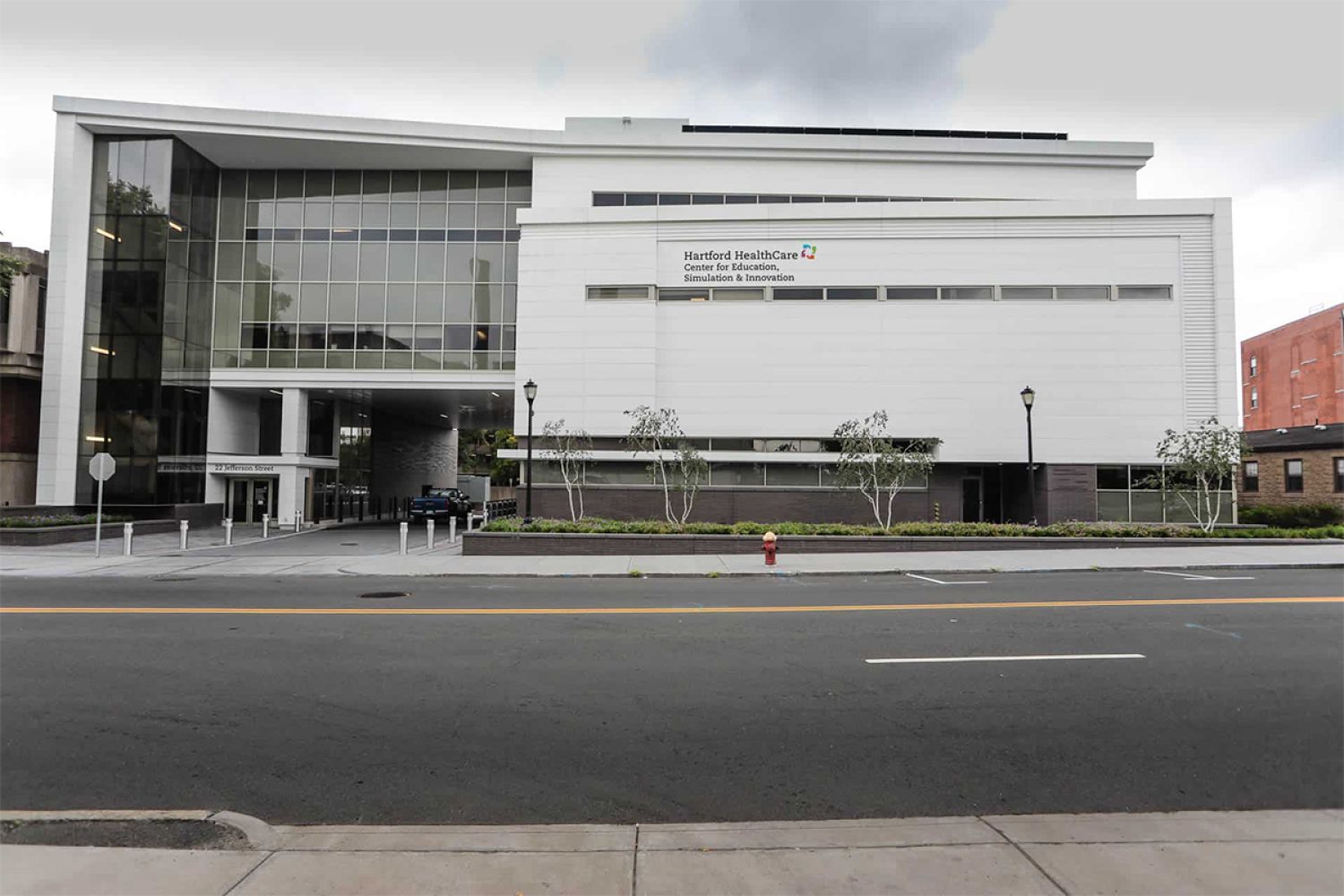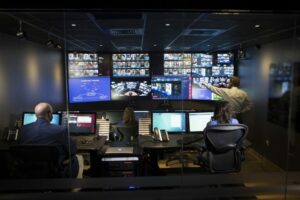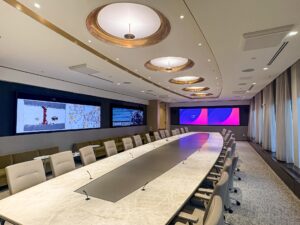The Center for Education, Simulation and Innovation (CESI) at Hartford Hospital is an ideal setting to begin to establish a culture of patient safety and open communication among the interdisciplinary team.
Audiovisual technologies refresh the Center’s original space built in 1999, while also creating a flexible and future proof technology environment in the newly expanded 10,000 square foot CESI. The new regional training facility is equipped with lecture and debriefing rooms as well as five simulated clinical environments, each with its own control room.
Lecture and Debriefing Rooms
Collaboration technologies foster seamless communications for educators and students. Throughout the facility, meeting and divisible classrooms are furnished with high definition displays and audio equipment for today’s most detailed videoconferencing capabilities available.
Interactive technologies engage educators and learners in the CESI classrooms. Content is easily fed to large-scale touch enabled displays while high definition cameras provide videoconferencing. Ceiling speakers and microphones deliver hands-free conversation for a natural flow of ideas, with lectern microphones available when requested. All sources are fed to the head end and then routed to each classroom.
Divisible rooms are easily pre-configured for flexibility and convenience for CESI staff. Control for these spaces is effortless via wall mounted touch panel, conveniently located by the lectern of each classroom.
Simulation Lab
Touch enabled displays, PTZ and fish-eye cameras equip the labs with visual technologies to present from as well as monitor these labs and simulated situations. Ceiling speakers and microphones provide seamless audio.
Control and Infrastructure
Each space is equipped with an individual control panel for basic room functions, while some are connected to the facility control room for additional support. Operators easily connect with participants via push-to-talk microphones or headsets coupled with each space’s video feed.
All video feeds are routed through the head end, centrally located in the facility. A digital signal processor routes and processes all audio in and out of the head end and supports audio calls. The entire system is designed for easy integration and expansion in the new space as well as future additions.
